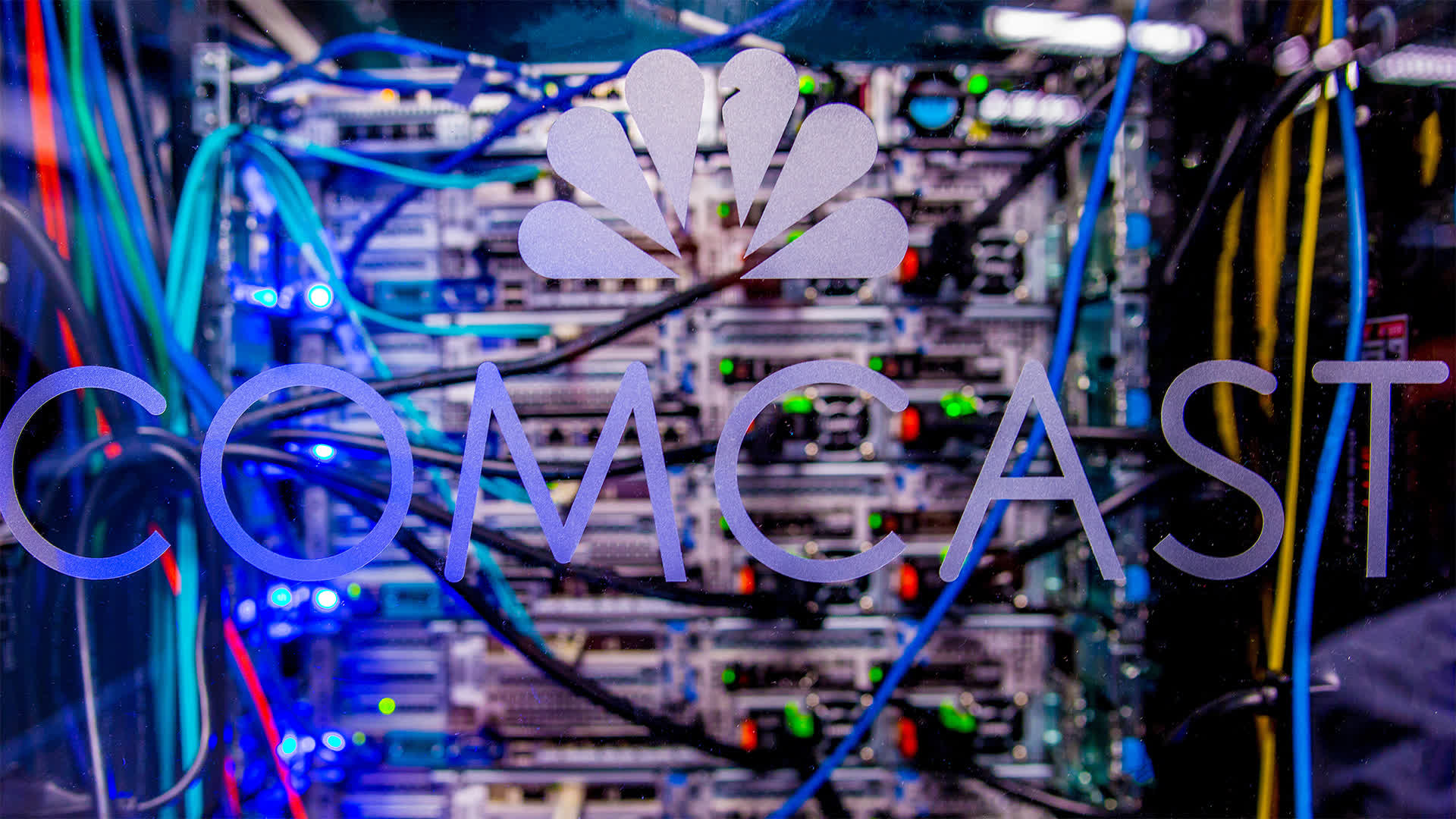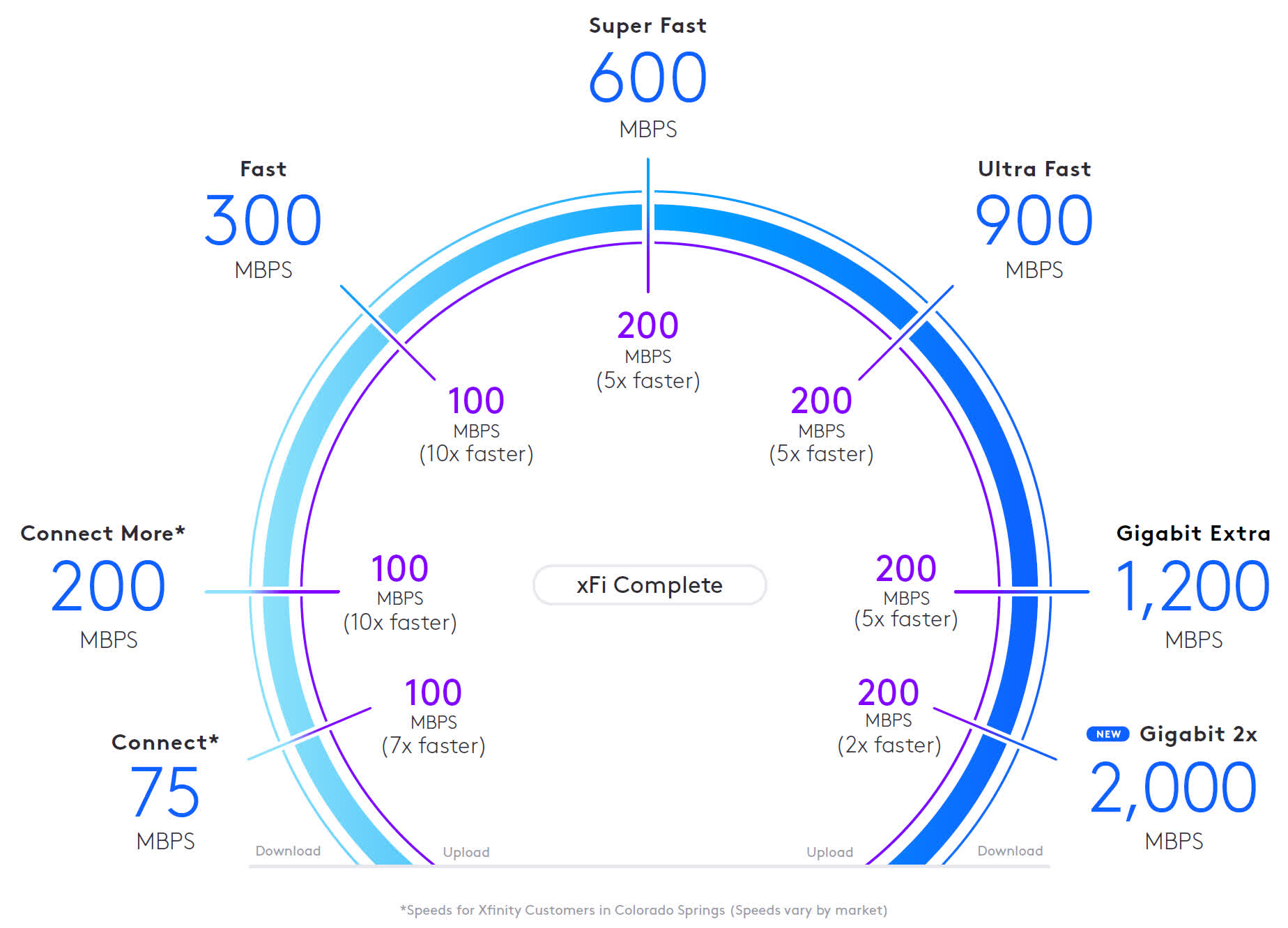In brief: Comcast has initiated what it is calling the largest and fastest multi-gig deployment of Internet service in the US. By the end of 2022, Comcast will offer download speeds up to 2,000 Mbps in 34 cities and towns across the country including Panama City Beach, Colorado Springs and Augusta, Georgia.

Initial rollouts are already underway and will continue through 2025 at which time more than 50 million homes and businesses will have access to the speedy service.
Comcast is also boosting upload speeds for select customers. As illustrated in the diagram below for Colorado Springs residents, upload speeds will now be between 2x and 10x faster than before.
The company started prepping for the upgrade earlier this year with the launch of its WiFi 6E Gateway. Described as the company's most powerful device to date, it delivers wireless connectivity across the 2.4 GHz, 5 GHz and 6 GHz bands to support the influx of connected devices in today's homes. Comcast also launched a new WiFi 6-certified business gateway in March.
The ISP said its work will help lay the foundation for the transition to DOCSIS 4.0 and 10G. Not to be confused with mobile 5G (which stands for fifth generation), 10G is the name of the technology that will enable Comcast to eventually deliver multi-gigabit symmetrical speeds over the cable connections that are already installed in tens of millions of homes and businesses, without having to dig up yards and neighborhoods.

In April, Comcast on a live network managed to reach download speeds beyond 8 Gbps with an upload speed north of 5 Gbps. That is about twice as fast (on the download side) as the modem it tested in January.
Comcast expects to launch its 10G-based multi-gig symmetrical service in the second half of 2023 alongside the rollout of faster speeds happening now.
What Internet speed are you rocking these days? Younger me ca not believe I am saying this, but at what point is a residential connection "fast enough?"
https://www.techspot.com/news/95943-comcast-rolling-out-2gbps-internet-service-select-states.html
